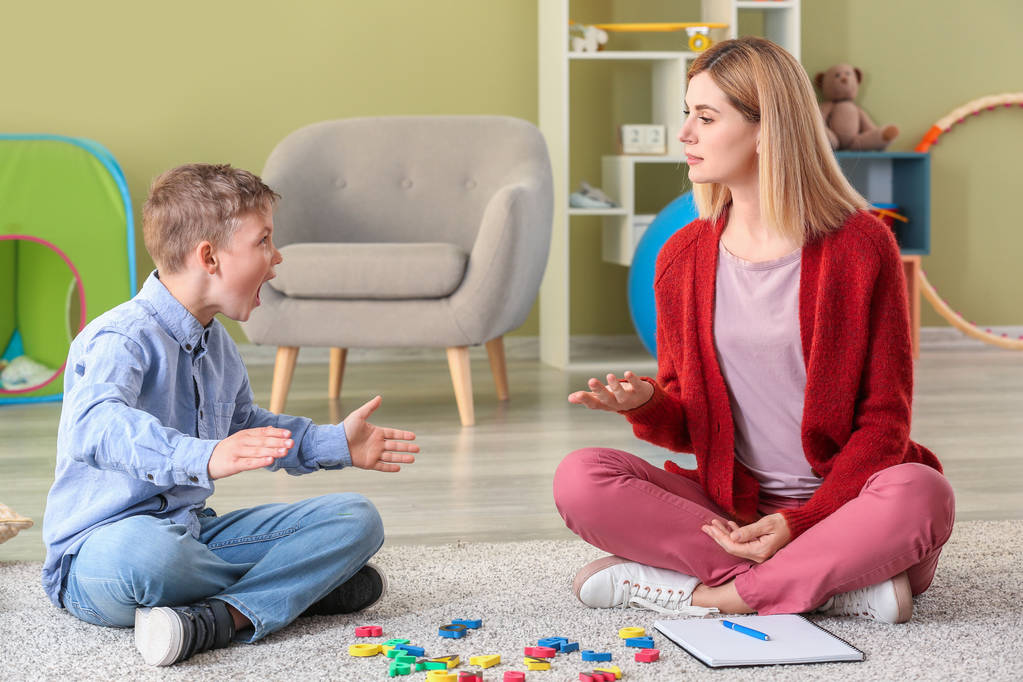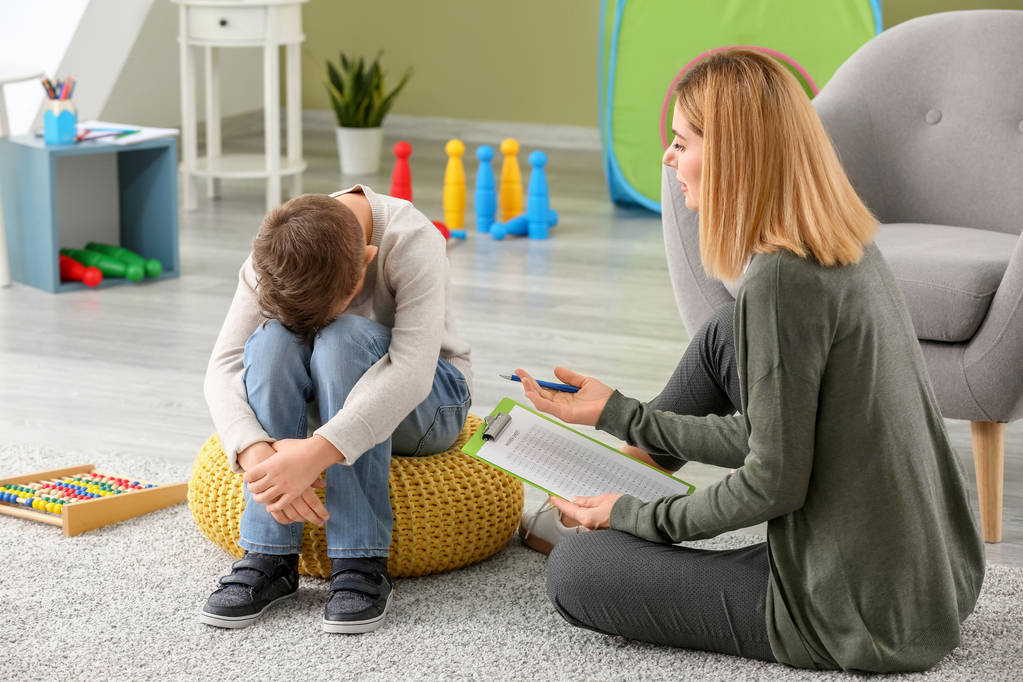Discover effective strategies and techniques for teaching emotional regulation to 8-9 year old children.
How to Teach Emotional Regulation to 8-9 Year Old Children
Do you have a 8-9 year old child who sometimes struggles with managing their emotions? Don’t worry, you’re not alone! Emotional regulation is an important skill that children need to learn, and it’s never too early to start teaching them. In this article, we’ll explore the ins and outs of emotional regulation for 8-9 year olds and provide you with some fun and effective techniques to help your child navigate their emotions. So let’s dive in!

Understanding Emotional Regulation
Before we delve into how to teach emotional regulation to your child, it’s important to first understand what emotional regulation is all about. Emotional regulation refers to the ability to recognize, understand, and manage our own emotions in different situations. It involves being able to calm ourselves down when we feel upset or anxious, and express our emotions in a healthy and appropriate way.
Emotional regulation is a fascinating aspect of human psychology that has been studied extensively by researchers and psychologists. It is like a complex dance between our thoughts, feelings, and behaviors. When we are able to regulate our emotions effectively, it can have a profound impact on our overall well-being and quality of life.
One interesting aspect of emotional regulation is that it is not a fixed trait that we are born with. It is a skill that can be learned and developed over time. Just like any other skill, it takes practice and effort to become proficient in emotional regulation. However, the rewards are well worth it.
What is Emotional Regulation?
Emotional regulation is like having your very own emotional superhero cape. It gives you the power to keep your emotions in check and respond to different situations with grace and composure. Imagine being able to navigate through life’s challenges with ease, knowing that you have the ability to regulate your emotions and make wise decisions.
Emotional regulation involves a variety of cognitive and behavioral strategies. It starts with self-awareness, the ability to recognize and identify our own emotions. This self-awareness allows us to understand why we are feeling a certain way and what triggers our emotional responses.
Once we are aware of our emotions, the next step is to manage them effectively. This can involve techniques such as deep breathing, mindfulness, and positive self-talk. By practicing these strategies, we can calm ourselves down when we feel overwhelmed or upset, and prevent our emotions from spiraling out of control.
Why is Emotional Regulation Important?
Emotional regulation is like the secret sauce in a recipe for a happy and well-adjusted life. It helps children navigate the ups and downs of life more effectively, build positive relationships with others, and succeed academically. Plus, it’s just plain cool to have emotional superpowers!
Research has shown that individuals who are skilled in emotional regulation tend to have better mental health outcomes. They are less likely to experience symptoms of anxiety and depression, and more likely to have higher levels of life satisfaction. In addition, emotional regulation is closely linked to resilience, the ability to bounce back from adversity.
For children, emotional regulation is especially important as they are still developing their emotional skills. By teaching children how to regulate their emotions from a young age, we are equipping them with a valuable tool that will serve them well throughout their lives. It sets them up for success in school, relationships, and future endeavors.
Furthermore, emotional regulation is not only beneficial for the individual, but also for those around them. When we are able to regulate our emotions, it allows us to respond to others in a more empathetic and compassionate way. It enhances our ability to communicate effectively and build strong connections with others.
In conclusion, emotional regulation is a powerful skill that can have a profound impact on our lives. By understanding what emotional regulation is and why it is important, we can begin to explore strategies and techniques to help ourselves and our children develop this valuable skill.
The Role of Age in Emotional Development
Did you know that emotional development is a journey that evolves as your child grows older? That’s right! The emotional landscape of an 8-9 year old child is quite different from that of a toddler or an adolescent. Let’s take a closer look at what emotional development looks like at this age.
At this age, children are starting to become more aware of their own emotions and the emotions of others. They are becoming better at identifying and labeling their feelings, which is a crucial first step towards emotional regulation.
But what exactly does emotional development look like for 8-9 year olds? Well, it’s not just about recognizing and labeling emotions. It’s also about experiencing and navigating more complex emotions, such as jealousy or empathy, as they navigate their social world.
Imagine your 8-9 year old child coming home from school one day, excitedly telling you about a new friend they made. They may feel a sense of joy and happiness, but at the same time, they might also experience a tinge of jealousy if they see their new friend playing with someone else the next day. These mixed emotions can be confusing and overwhelming for them, but it’s important to help them understand and navigate these emotions in a healthy way.
Age-Appropriate Emotional Skills
Your 8-9 year old child is like a little emotional sponge, soaking up all the information and skills they need to regulate their emotions. Some age-appropriate emotional skills to focus on include:
- Recognizing and labeling emotions: Encourage your child to express how they feel and help them put a name to their emotions. This will help them develop a better understanding of their own emotional landscape.
- Identifying triggers for emotional reactions: Help your child identify the situations or events that trigger certain emotions. By recognizing these triggers, they can learn to anticipate and manage their emotional responses.
- Developing empathy for others: Teach your child to put themselves in someone else’s shoes and understand how their actions or words may affect others. This will help them develop compassion and empathy towards others.
- Problem-solving and finding coping strategies: Encourage your child to come up with solutions to emotional challenges they may face. Help them brainstorm healthy coping strategies, such as deep breathing or talking to a trusted adult.
- Expressing emotions in a healthy and constructive way: Teach your child that it’s okay to feel and express their emotions, but also guide them in finding appropriate ways to do so. This could include using “I” statements to communicate their feelings or engaging in creative outlets like drawing or writing.
By focusing on these age-appropriate emotional skills, you can support your child’s emotional development and help them navigate the ups and downs of their growing emotional landscape. Remember, emotional development is a lifelong journey, and each age brings its own unique set of challenges and opportunities for growth.
Techniques for Teaching Emotional Regulation
Now that we have a better understanding of emotional regulation and how it evolves at this age, let’s dive into some fun and effective techniques for teaching emotional regulation to your child.
Verbal Techniques for Emotional Regulation
One of the most powerful tools in your emotional regulation toolbox is good old-fashioned communication. Talking openly with your child about their emotions and how to manage them can make a world of difference. Here are some verbal techniques to try:
- Encourage open conversations about emotions.
- Help your child identify and label their emotions.
- Teach them simple relaxation techniques, such as deep breathing.
- Use role-playing games to help your child practice expressing their emotions in different situations.
- Set a good example by managing your own emotions effectively and expressing them in a healthy way.
Non-Verbal Techniques for Emotional Regulation
Not all communication happens through words. Sometimes, non-verbal techniques can be just as effective in helping your child regulate their emotions. Here are some non-verbal techniques to try:
- Encourage physical activities like dancing, jumping, or yoga to release pent-up emotions.
- Create a calming corner in your home where your child can retreat to whenever they need some alone time to calm down.
- Teach them simple mindfulness exercises, such as focusing on their breath or observing their surroundings.
- Offer sensory tools like stress balls or fidget spinners for your child to use when they feel overwhelmed.
- Use visual aids, such as emotion charts or mood boards, to help your child understand and identify their emotions.
Incorporating Emotional Regulation into Daily Routines
Teaching emotional regulation doesn’t have to be limited to specific lessons or activities. You can incorporate it into your child’s daily routines to make it a natural part of their lives. Let’s explore how you can do that.
Emotional Regulation during School Hours
Help your child develop emotional regulation skills in the classroom by:
- Collaborating with your child’s teacher to create a supportive and emotionally safe classroom environment.
- Teaching your child how to identify and manage their emotions during classroom activities.
- Encouraging your child to seek support from their teacher or school counselor when needed.
- Providing your child with a small emotional regulation toolkit to keep in their backpack, filled with items like stress balls or emotion cards.
Emotional Regulation at Home
At home, you can create a nurturing environment that supports your child’s emotional development. Here are some ideas:
- Allocate a specific time each day for conversations about feelings and emotions.
- Encourage your child to create a special calm-down space in their room to retreat to whenever they need it.
- Model healthy emotional regulation by expressing your own feelings in a constructive way.
- Practice gratitude and emotional check-ins as a family to promote emotional well-being.
Addressing Challenges in Emotional Regulation
While teaching emotional regulation can be fun and rewarding, it’s important to acknowledge that challenges may arise along the way. Let’s explore some of the common challenges you may encounter and strategies for overcoming them.

Common Emotional Regulation Challenges
Some children may struggle with emotional regulation more than others. Here are some common challenges you may come across:
- Difficulty identifying and labeling emotions
- Resistance to talking about or expressing emotions
- Struggles with self-soothing or calming down when upset
- Difficulty transitioning between different emotional states
- Struggles with empathy or understanding others’ emotions
Strategies for Overcoming Challenges
When faced with these challenges, remember that every child is different and may require different strategies. Here are some general strategies you can try:
- Be patient and understanding, and give your child space to process their emotions.
- Use visual aids or storytelling to help your child better understand emotions and their consequences.
- Offer a variety of coping strategies and techniques and allow your child to choose what works best for them.
- Seek guidance from a child therapist or counselor who specializes in emotional regulation if needed.
- Celebrate small victories and progress, no matter how small.
Remember, teaching emotional regulation is a journey that takes time and patience. With your love, support, and playful guidance, you can help your child develop the emotional superpowers they need to navigate the world with confidence. So put on your cape and let’s embark on this exciting adventure together!



